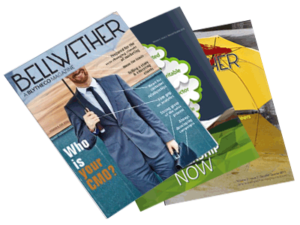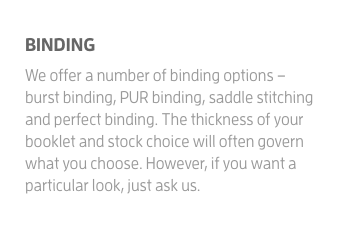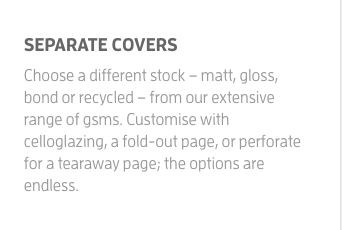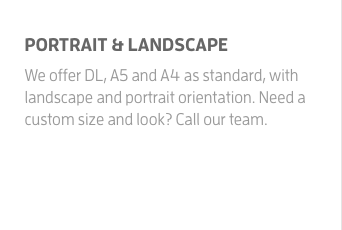Magazines
A Magazine’s Design And Stock Choice Sets The Scene; It Tells A Story Before It’s Even Opened.
A Magazine’s Design And Stock Choice Sets The Scene; It Tells A Story Before It’s Even Opened.
We offer a standard saddle stitched, A4 gloss magazine, as well as more specialised options. Separate covers, different stocks, PUR and burst binding – these all give you the flexibility to customise your look for each and every client.
Order Now



Available sizes:
A3, A4, A5, A6, DL
8 – 200 page format depending on your selected stock weight
Colour:
Full Colour one or both sides printed
Black and White / Grey Scale
Finish:
Covers can be Matt or Gloss Celloglazed depending upon stock weight
Celloglazing available on one or both sides of covers only
Optional extras:
Burst Binding and Perfect Binding
Other options are available on request
Stock:
80gsm through to 200gsm
Gloss and Bond stock
Recycled stock options also available
Not all stock types are available in every gsm
Next Day dispatch available on a wide range of Offset Magazines. Contact us for more details.
Bleed:5mm for all sides.
Safe zone:5mm for magazines/booklets.
Accepted file types:PDF version 1.4 or higher formats only.
Resolution:300 dpi for all images and artwork at full size; 800 dpi for all text as an image.
Colours:CMYK or grey scale only.
Fonts:All fonts are embedded or converted to curves so they print correctly.
In the 17th century, once the printing press became more readily available, early publishers in Germany, France and the Netherlands, began publishing brochures and pamphlets and gradually over time these became magazines as we know them today. With an increase in literacy around the 18th century many women were beginning to read and this increased magazines popularity and many magazines were written specially for women. The first one of these was The Athenian Mercury in 1693.
During the 1830s due to a decline in the cost of printing, publishers started to produce less expensive magazines which were available to a wider range of people. The style changed somewhat; they were no longer focused on the elite but an expanded audience including children as well as the other family members. By the 1900s advertising was introduced in magazines and for the first time they could be sold for less than it cost to produce them.
The late 20th and early 21st centuries brought online technology into the magazine industry and magazines are mainly produced for company publications and the like.
Magazines are usually saddle stitched. This means they are single sheets of paper which are printed on both sides, collated in page number, folded in half then stapled together and the edges trimmed. Because of this method of production your magazine will be printed on large sheets of paper and the number of pages has to be in a multiple of four.
Burst binding can sometimes be used for magazine production. It is a binding process where the spine is glued with hot glue and a cover attached. PUR binding is used to bind magazines in a softback style with a spine. The only difference between burst binding and PUR is the type of glue used in the process.
At Stationery R Us we offer a standard saddle stitched A4 gloss magazine as well as more specialised options. To give you the flexibility to customise your look for each client we also offer separate covers, different stocks, PUR and Burst Binding.
Our extensive range of GSM’s allows you to choose whether you want to use matte or gloss, bond or recycled stock.
To place an order for your magazine with Stationery R Us you need to –
Next Day dispatch is available on a wide range of Offset Magazines. Contact us for more details.